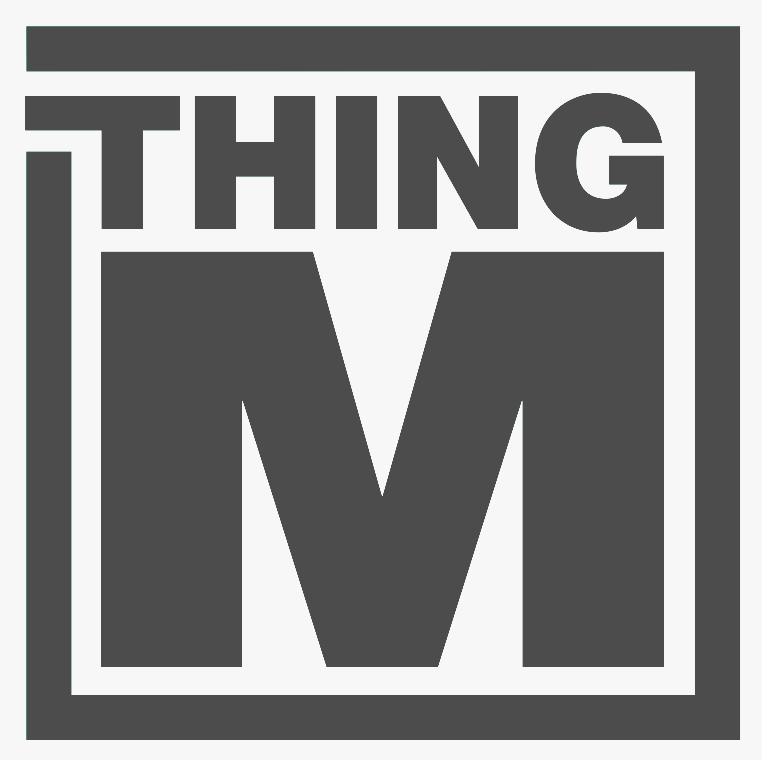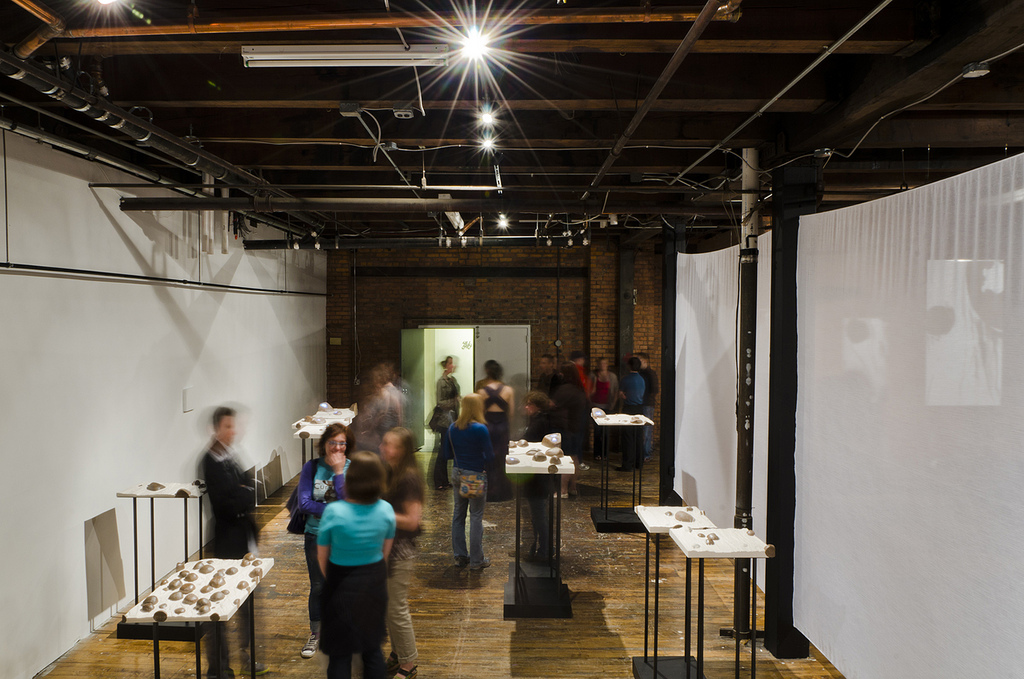ThingM MaxM in “Current”
/“Current: Technology+Contemporary Claycraft” by: Virginia Pfau MFA Ceramics Candidate, School for American Craft, Rochester Institute of Technology
For my MFA thesis work, I chose to explore the integration of technology into the ancient art of clay sculpture. I dug a ton or so of mud from the local Genesee River boat dock, and formulated a paperclay out of it. I used this clay to make rock-like forms, and blasted some of them at my “weatheration station” in the studio, using water-erosion to create holes and textures. I then used Hydrostone, a material cousin to plaster, and a ramp system I rigged in my workspace to simulate the movement of water in a stream around the stones. I was able to control the composition of the stones in each piece, and to some extent the movement of and lines painted by the hydrostone as I poured it in layers around them, but I also enjoyed letting gravity do some of the artwork.
Since the stones were hollow, partly for weight and firing issues, partly to accommodate the lights, I heat-inlaid plastics into them and put combinations of ThingM blinkM and MaxM LEDs inside, programming them to pulsate gently with a soft blue light to match the visual speed of the “water”. I also added the occasional hint of a red or green to the lights, a simple task with the easy-to-use computer program I downloaded from the website. I coated the inside of each lighted stone with a reflective silver mylar to allow maximum light to flow out through the semi-opaque white plastic. I ran the LED lights off battery packs as demonstrated on the: http://todbot.com/blog/2011/02/25/blinkm-battery-pack-howto/ link, and wired together several MaxM Blaster Units off single Masters so that all the components could fit in the sculptures with multiple lighted rocks.
My thesis opening was held May 6 in a room I had rented at an old warehouse in Rochester. I had about 350-400 visitors attend the show, and they seemed to enjoy the work immensely. In the past several years at school, I had done a few other projects involving lights and LED’s, but I was always at odds as to what to do about the power source, and had received criticism when I showed the power cords, as with a piece I did with two wall outlet cords, or another piece I did with solar-powered LEDs. Using the ThingM products allowed me not only to entirely hide the power source for the lights, but also to control the patterns and colors of the lights in my sculptures. I was delighted to watch the public enjoy my sculptural installation, gaze at the pulsing lights, and then look underneath to find nothing but a steel plate.
For more photos and videos please visit: http://www.flickr.com/photos/va-pfau/5759732618/in/photostream






